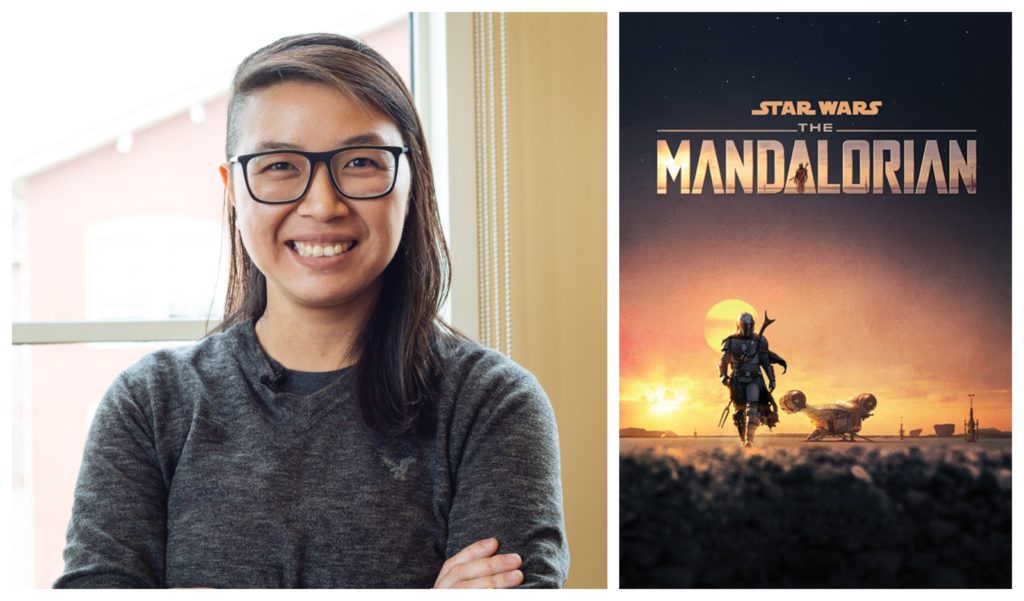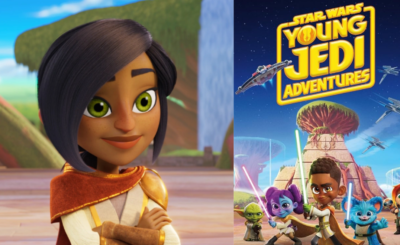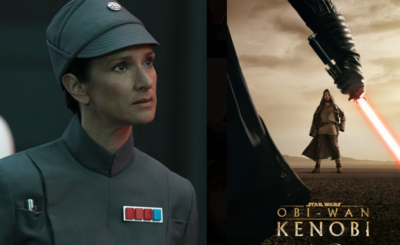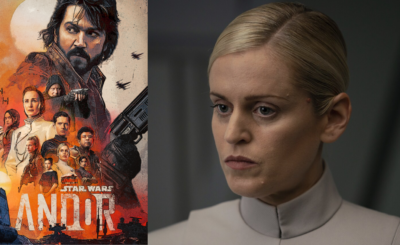
Charmaine Chan has worked on Star Wars projects including The Mandalorian and The Last Jedi at ILM. She answered a few questions via email for this interview. Charmaine couldn’t talk about The Mandalorian (where she is a Real time operator & Lead compositor) but hopefully when she does get the go-ahead to speak about that project I can update this interview.)
What was your introduction to Star Wars?
I was first introduced to Star Wars a little later in life, specifically the end of my high school years. One of my friends had me watch Episode 4, and it was quite exciting to see!
Do you have any favorite Star Wars characters or films?
Picking a favorite is difficult, but I’ve always been a fan of Chewbacca and love that he’s been a very consistent character throughout all the films!
How did you start working in the field of visual effects? What have been some of your job titles/roles throughout the years?
I always knew I wanted to be in a field that combined both art and technology. Growing up I was definitely focused more on the math and science side, but always loved visual representation and storytelling.
I actually did web development and design first, then moved into motion graphics, and found my way into VFX as a resource assistant at ILM. I was dealing more with data and file management then. But then moved onto become an assistant technical director where I worked directly with artists and supervisors on their pipeline and tool needs
It wasn’t until I helped setup ILM’s canonical Nuke pipeline that the compositing supervisors started to rely on me and give me the opportunity to work on shots. My first show compositing was actually Mission Impossible: Ghost Protocol. I got to do some basic extractions and set extensions and was supervised by Todd Vaziri and John Knoll who were two of the best supervisors to have first time comping. I learned so much!
I was also the Area Tech Lead for the compositing department in San Francisco. And have recently transferred over to London to help lead compositing for our new TV/Episodic division of ILM.
You’ve been with ILM since 2007. That’s a long time to be attached to one company. What do you think is special about ILM?
As noted above, I’ve had an amazing opportunity to work my way up the ranks at ILM starting with more tech roles and now moving into more artistic and creative roles. What I love about ILM is that there is a culture of pushing for the best work out there but executed in new and innovative ways. I have some of the most brilliant and creative colleagues and we all love sharing. But it is also not a huge company, so there is a sense of community and family to it too.
For The Last Jedi you worked as a senior compositor. What does a digital compositor do and what scenes or effects did you spend the most time on in that film?
A compositor is the person at the end of the process who puts together all the CG rendered elements and original plate footage. They adjust lighting, coloring, fx, etc. to make it that final composed image you see on the big screen.
On The Last Jedi, I spent a lot of time helping develop the look and feel of Kylo Ren’s perspective during his duel with Luke Skywalker. This has been broken down in my ILM blog post where so much of color and animation was used to portray the feeling of tension.
I still can’t talk specifics of The Mandalorian, but what I can say is when it comes to visual effects, it’s not just a post process. Filmmaking happens in many stages, and being part of the actual production process helps us get a more accurate in-camera finals but also gives better direction to the post needed. As a compositor it makes my job a lot more thorough being part of it at the beginning and end.
Here’s a video of Charmaine talking about some of her work on The Last Jedi.
Would you describe the visual effects industry (or perhaps just at ILM) as diverse or do you think there’s a lot of work to be done getting more women and people of color working in visual effects?
I think VFX suffers the same amount as Hollywood and the tech industry. It’s not diverse at all. When women represent less than 20% of your company or department, it’s quite easy to feel alienated. But the thing is the women, people of color, LGBTQ+ folk who are in the industry are incredible and talented and should be given the chance to shine. We may work behind the scenes, but we should do everything we can to push them into the limelight. Representation absolutely matters and I was so lucky at ILM to be able to see fellow women of color in leadership roles, so I knew I had the possibility and chance to rise up the ranks as well.
But there still is a lot we can do, and getting that 50/50 number can go a long ways. We need to bring in more women, more people of color, and more LGBTQ+ people, but we also need to help them in their career paths. Retaining our talent is hard, and we need to reshape what we think success and a leader is. Combat our own biases.
I’m curious since you work in visual effects what classic and more recent films stick out to you as having impressive effects? Do you have an all-time favorite Star Wars visual effects shot or sequence (either that you worked on or didn’t)?
When it comes to classics, 2001: A Space Odyssey was a huge influence on me. Kubrick’s visual style plus their methods of creating effects was just mind blowing for that time. Jurassic Park also played a part of me wanting to get into visual effects. Those dinosaurs felt very real to me as a kid 😉
But as for Star Wars visual effects shots, when I had the chance to work on the Rogue One trailer shots where the Death Star was being revealed by the Star Destroyers, that was quite an iconic look to work on. Every little detail was referenced to the original practical models, and though quite simple, was very impactful!
Why do you think people are still hungry for more and more Star Wars stories after over 40 years?
I think the amazing thing about Star Wars is you have this world full characters, creatures, galaxies, and beyond that allow people to escape into the unknown. Whether you like the Jedi or Ewoks, there’s something for everyone. But at its roots its just relatable storytelling that anyone can grasp onto. I love that people can expand their imaginations and have fun, even if it’s just for 2 hours of the film.
A few years ago you started a project called Women in Visual Effects. Can you explain what this project is and why you started it?
I started the project Women in Visual Effects right before the 2016 US elections. I always wanted to interview women in my industry and decided to just start recording it. I had a lot of women who were really excited that we were finally going to have our first woman president. Then of course the election happened, and that wasn’t the result, and I felt even more motivated than ever to showcase women at the forefront. Too often their stories, their experiences, are completely forgotten… yet they’re out here being VFX supervisors, animation supervisors, etc. and absolutely killing it. It was about time they were given the center stage. And for the public to see they exist and are creating and working on some of the most loved stories and franchises out there!
You can find Charmain’s Women in VFX series here. And below is a behind the scenes video of the project.
What advice do you have for women interested in learning more about careers in visual effects?
I believe that if you have the passion, love, and drive for filmmaking or any media creation, keep going at it. You may need to do roles or positions for a while before you get to do exactly what you want, but if your passion is there, other people will notice and will help you move up your career and knowledge in VFX.
It’s a hard industry, but its a fun industry, and when you know you’re helping bring a little entertainment and joy into people’s lives, it def makes it worth it.
Feb. 2021 Update!
Check out this new interview with Charmaine from Skytalkers Podcast.








1 thought on “Day 513 – Charmaine Chan”